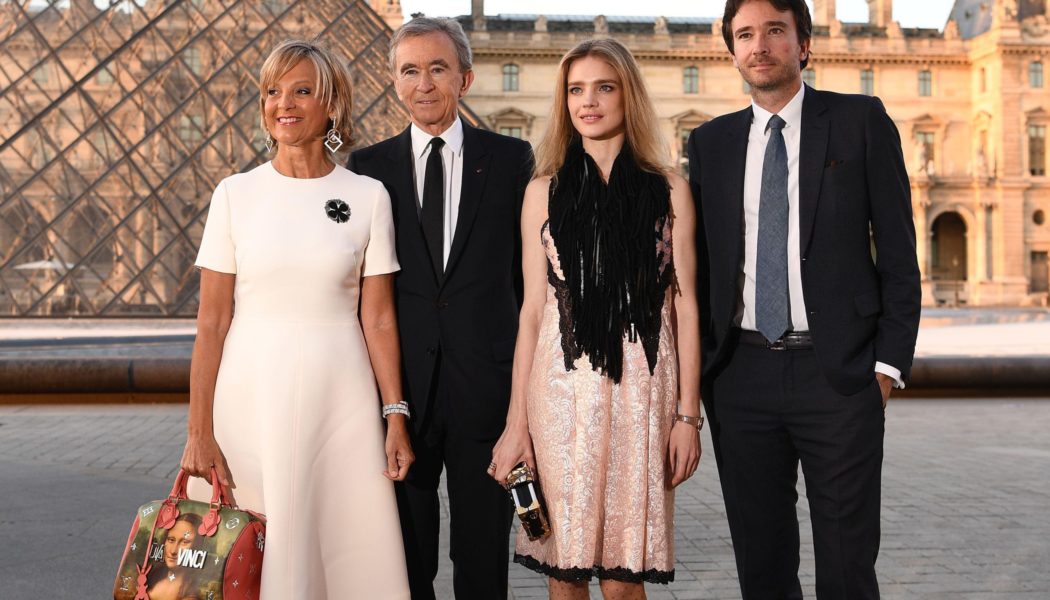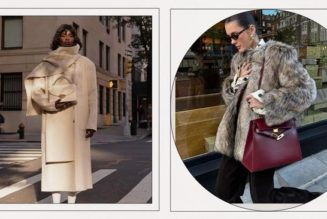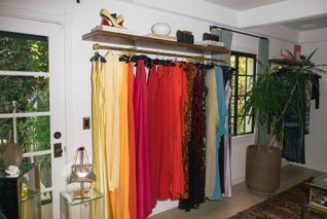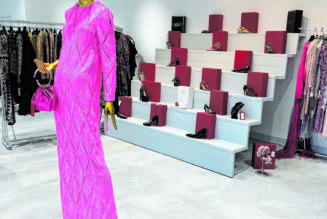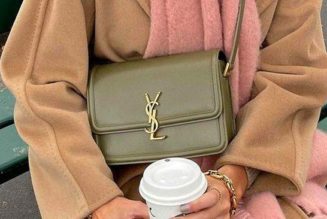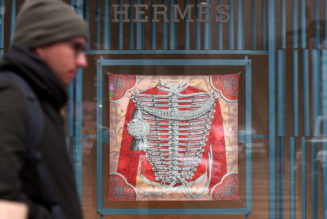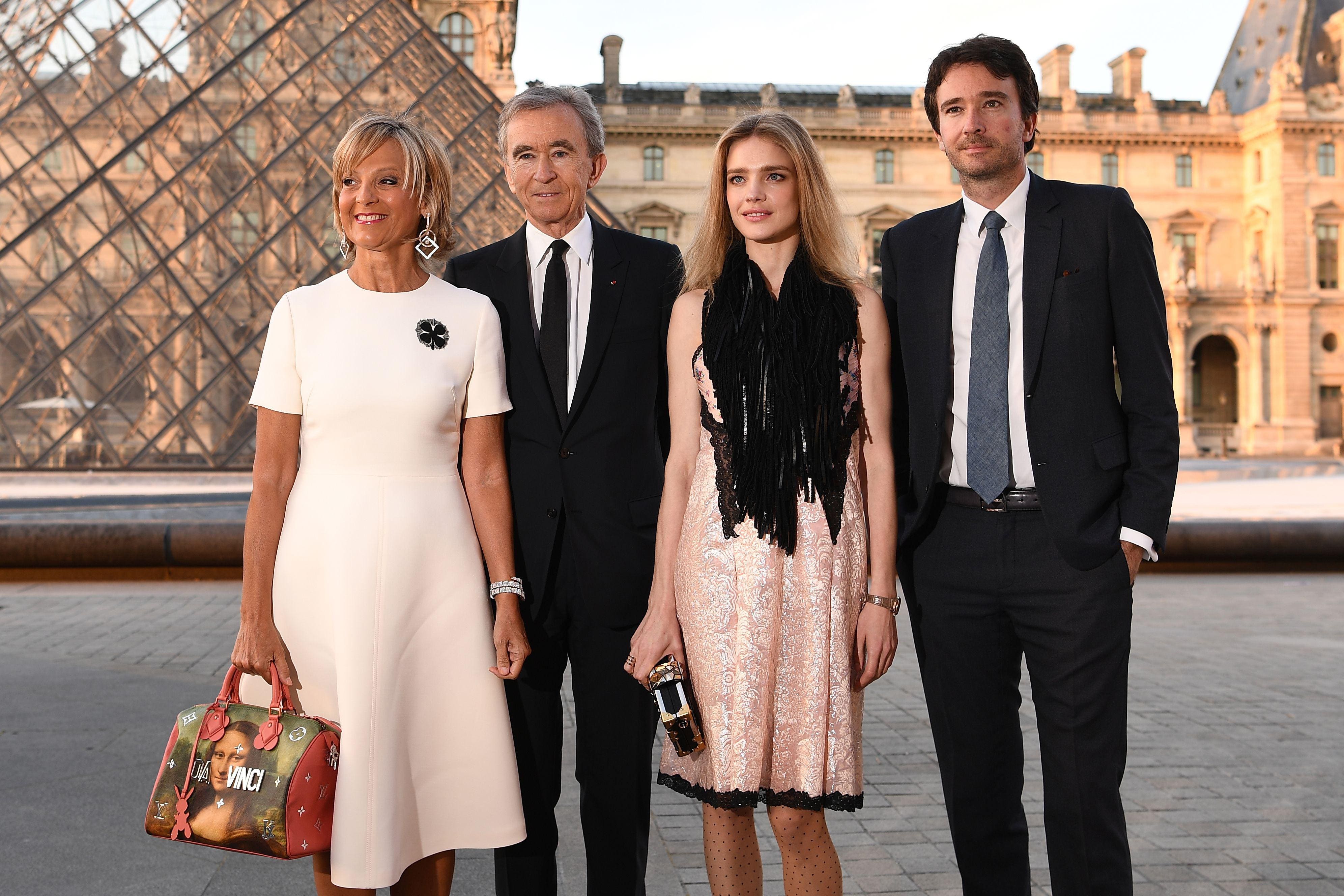
Blame it on Michael Kors. The American designer became a rare fashion billionaire by taking his eponymous label public in 2011, then buying footwear legend Jimmy Choo and Versace. Yes, Versace. In the decade since, Tod’s has revived Schiaparelli, Only the Brave buoyed mass market appeal of Diesel with avant-garde credibility of Maison Margiela, and Raf Simons made stewardship rounds at Dior, Calvin Klein, and Prada before discontinuing his namesake line. The era of solo entrepreneurship had come to an end ushering in the age of acquisitions. Emerging and legacy lifestyle brands have become priority commodities for venture capital. L’Oréal has just bought premium cosmetics brand Aesop for $2.5 billion in its largest deal ever.
(From L) Danish actor Nikolaj Coster-Waldau, French model Cindy Bruna, Australian actress Katherine … [+]
Selling the business appears to be the latest aspirational business model in the industry. Technically, luxury conglomerates tend to be family-owned enterprises. Bernard Arnault – the world’s richest man – runs LVMH while his six children stand in line for Succession-style succession. Arnault’s rival François Pinault has four kids to look after his Kering empire. There is also the Porsche family with their majority stake in Volkswagen which owns luxury’s hottest wheels: Lamborghini and Bentley. However, there is a qualitative difference between astute management of an investment portfolio and steering the creative and business direction of one brand. Remember Vertu phones? Exactly. Changing hands does not always add brand value. Sometimes we hear about luxury dynasties in crisis management mode akin to the infamous House of Gucci saga or the more recent Guerlain family drama.
Here are a few family-owned luxury brands redefining the future of fashion, jewelry, and beauty on their own terms, scandal free.
H. Stern
Jeweler Hans Stern. (Photo by Ray Fisher/Getty Images)
Young émigré Hans Stern fell in love with Brazilian gemstones: topazes, amethysts, tourmalines. As the end of World War II and greater transportation options powered transatlantic trade and tourism, an H.Stern boutique was opened in 1949 right in the port of Rio-de-Janeiro catering to the growing cruise crowds. Later, the company would be at the forefront of establishing duty-free premium shopping in airports, also becoming the first in the business to offer a worldwide warranty. Among its innovations was the pivot to discreet branding: a simple star on the inside of rings and other pieces. Roberto Stern oversaw the brand’s brick-and-mortar expansion in the 1990’s. Under his leadership as President and Creative Director, H.Stern continues to blaze trails keeping Latin America on the luxury map. The collaboration with the architect Oscar Niemeyer (the only architect with an entire city on a resume) solidified the brand’s place in the jewelry history books.
H. Stern Ring
While the privately-owned company does not disclose its financial data, the fact that its network of 150+ international stores survived the pandemic intact speaks volumes both on the health of the brand and the stabilizing market appeal of precious metals and stones.
Graff Diamonds
– JANUARY 28: (L-R) Francois Graff, Laurence Graff and Henri Barguirdjian attend WITTELSBACH-GRAFF … [+]
Success favors the audacious. The year is 1960. The Beatles are playing dive-bars in Hamburg. A twenty-year-old Laurence Graff starts a diamond company in London. Graff’s singular passion to be the best powers his meteoric rise in a notoriously conservative industry. In 1966 his design wins the De Beers Diamond International Award followed by the Queen’s Award for Enterprise in 1973, the first jewelry brand to do so. The family has also led preservation efforts acquiring rare items such as the Windsor Yellows worn by Wallis Simpson, or the diamond allegedly belonging to Suleyman the Magnificent of Turkey. Graff’s own $100-million Peacock Brooch is a milestone in haute joaillerie history and its Graffabulous collection made haute couture news.
Graff Necklace
The company was among the first luxury brands to court Middle Eastern luxury consumers and embrace fashion diplomacy as a marketing strategy. Graff diamonds are laser engraved with Gemological Institute of America tracking numbers, invisible to the naked eye, guaranteeing transparency across its 50+ stores in luxury destinations like Courchevel, Monte Carlo or Las Vegas. François Graff runs the company as its CEO.
Holy Gems
From left: Mendi Taub (COO), Chen Kolton Taub, (Digital Marketing Manager), Tali Shalem Taub (CEO), … [+]
It’s not every day that our understanding of the Earth changes fundamentally. Can profound paradigm shifts be powered by a luxury brand?! Lubavitcher Rebbe once spoke of precious stone deposits in Israel. For twenty years, jeweler Avi Taub staked entire family fortune and reputation on proving this scientifically unsound prophecy. His company funded research that led to the discovery of the Carmel Sapphire designated by the International Mineralogical Association as its Mineral of the Year 2018. Behold the unique gem from within the Holy Land. Led by Taub’s daughter, Tali Shalem-Taub, and her siblings, the company is tapping into the growing interfaith cultural diplomacy movement in the Middle East. Its traditional designs, and the founding story of its gems, appeal to customers from the Abrahamic traditions: Judaism, Christianity and Islam, as well as those after something rare and extraordinary.
Holy Gems Necklace
“Holy Gems jewelry takes the idea of beautiful heirlooms, and the notion of cherished investment, to a higher level. It is tangible spirituality for future generations,” notes Shalem. One family’s tenacity has rewritten geology textbooks and brought a rare categorically new offer to the luxury market. Being the exclusive miners of these special gems, the brand’s flagship boutique in Jerusalem is becoming the Holy City’s must-visit destination for luxury shoppers, jewelry experts, and gem aficionados.
“The Italians”
Made in Italy. What began as a local business initiative in the 1980’s became a case study in worldwide luxury marketing. Centuries of superb craftsmanship supported by decades of constructive governmental regulation yielded phenomenal results for the Italian fashion industry. Today several notable brands continue to operate as mom-and-pop shops, on a global scale. For example, Salvatore Ferragamo was born the eleventh of fourteen children and made his first pair of shoes at the age of nine for his sister. He would go on to build a celebrity-powered footwear empire on the heels of Hollywood’s most enigmatic leading ladies: Marylin Monroe and Judy Garland.
FLORENCE, ITALY – JULY 18: Shoes are displayed in the museum located in the headquarters of the … [+]
The company is run by several family members in leadership positions in key international markets. Since 1975, Giorgio Armani has maintained sole control over the company which pioneered the contemporary luxury industry playbook: diffusion lines, beauty division, addition of homeware and furniture, expansion into hospitality and gastronomy. Armani introduced the Armani lifestyle.
MILAN, ITALY – FEBRUARY 26: Fashion designer Giorgio Armani acknowledges the applause of the … [+]
When Miuccia Prada inherited her grandfather’s leather goods business in 1978, it had been a fixture of Milan high-end market for half a century. Her ugly-chic leadership spearheaded Prada to become Italy’s biggest independent fashion holding. Collectively, these Italian fashion and beauty brands serve as a testament to the immense creative power of family-owned luxury business.
Italian fashion designer and businesswoman, Miuccia Prada acknowledges applause following the … [+]
Vanleles Diamonds
Inevitably, when Hollywood makes a biopic about Vania Leles, it will be Oscar bait. Born in Guinea Bissau, a chance conversation at a photo shoot made her quit modeling and enroll in Gemological Institute of America with a goal to be the first African woman jeweler working with ethically sourced African diamonds. In a decade preceding the launch of Vanleles Diamonds in 2012, she had worked at Graff, DeBeers and Sotheby’s perfecting her vision for “a new era of mindful, sustainable and engaged luxury.”
VANIA LELES
A self-avowed afropolitan, her collections are inspired by the continent’s vast natural and cultural treasures from the Nile to the Eye of the Sahara. The brand has proudly supported charities like Malaika Foundation and the African Union COVID-19 Fund. Vanleles flagship atelier is in London’s historic Brook Street.
Vanleles diamond earrings
“To be daring, to take risks and experiment with new materials, to let my imagination run wild without consideration for whether someone would approve it or if it makes sense commercially. I wouldn’t have this anywhere else,” the founder and creative director credits family ownership for greater freedom and joy in her groundbreaking work as a game-changer for African luxury heritage.
Hermès
PARIS, FRANCE – MARCH 04: (L to R) Rosie Huntington-Whiteley, Hermes CEO Axel Dumas and Dame Anna … [+]
“Contemporary artisan since 1837.” CEO Axel Dumas is a sixth-generation member of the Hermès-Dumas family to run the business. Its history is a great case study in brand evolution. Having cornered the equestrian accessories market among the nobility, the company moved into athleisure with golfing gear for the likes of Prince of Wales and its square scarves for the women attending various events on the upper-class social circuit. Clothes, perfumes, and home goods followed. The brand managed to bottle the lightning twice (or rather bag it). First with the Kelly bag named after Grace Kelly in her Princess of Monaco era and again with the Birkin bag co-designed by Jane Birkin at the peak of her jet-setting fame. Introduced in 1984, it has become the default luxury status symbol. The demand outpaces the supply so dramatically, even the waiting list has turned into an urban legend.
PARIS, FRANCE – JUNE 25: A guest wears a pink and white gradient pattern shirt, a brown and orange … [+]
The family is vigilant about its know-how. Recently, Hermès has set precedent by winning a lawsuit against a digital artist selling MetaBirkin NFTs. It is also assertively pursuing trademark status for the shade of orange used in its packaging. The brand continues to create the luxury industry development blueprint, now beyond the virtual frontier.
